To get you ready for the awesomesauce that is KRAKEN Day(!!), it is only appropriate to open with Dr. M’s Epic giant squid post from earlier this year. Enjoy :)
——————————————
In the following post I will enumerate the many ways in which current science repeatedly demonstrates that giant squids are awesomesauce.
Awesome: (adj) amazing, awe-inspiring, awful, awing (inspiring awe or admiration or wonder) “New York is an amazing city”; “the Grand Canyon is an awe-inspiring sight”; “the awesome complexity of the universe”; “this sea, whose gently awful stirrings seem to speak of some hidden soul beneath”- Melville; “Westminster Hall’s awing majesty, so vast, so high, so silent”
Awesomesauce: (n) Something that is more awesome than awesome. It is a modifier of your basic awesome into a more awesome version.
Giant Squid or Giant Squids?
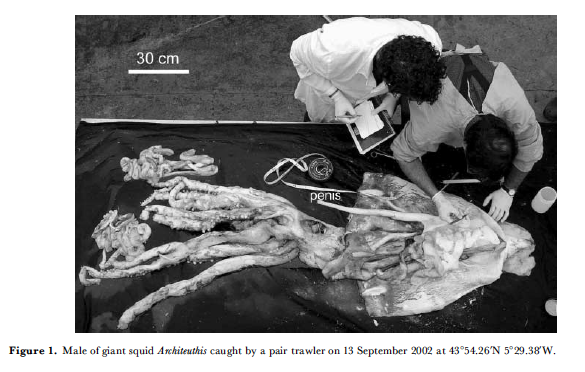 Tonight when you go to bed consider that 20 different giant squids are lurking about. Well maybe not your bed. But if your bed was in the deep ocean then there could be 20 different giant squids mucking around.
Tonight when you go to bed consider that 20 different giant squids are lurking about. Well maybe not your bed. But if your bed was in the deep ocean then there could be 20 different giant squids mucking around.
In 1857 Japetus Steenstrup, a Danish biologist scientifically named several squids and octopods in the shortly titled Hectoctyldannelsen hos Octopodslaegterne Argonauta og Tremoctopus, oplyst ved Iagttagelse af lignende Dannelser hos Blacksprutterne i Almindelighed. Among those species Steenstrup named was the Giant Squid or Architeuthis dux. The scientific name comes from the Latin archi- or Greek arkhi- meaning chief or most important, the Greek word teuthis for squid; and the Latin dux meaning leader. So literally the name Architeuthis dux translates to “most important squid leader”. That is scientifically an awesome name.
Since 1857, everyone wanted to name a new giant squid species. And who wouldn’t because they are awesome? Thus to date 20 species of giant squid are named. But quite frankly not everyone buys into this gaggle of giant squid. Nesis in the 1980’s suggested that only three valid species exist, Architeuthis dux in the North Atlantic Ocean, Architeuthis martensi in the North Pacific, and Arciteuthis sanctipauli in the Southern Ocean. Of course, no one knows for sure. The key would be in the genes and giant squid expert Steve O’Shea commented on a thread that his lab’s genetic research indicated that “in short, no [genetic] difference between any of the regions (no evidence for recognizing more than one species).” So one Giant Squid distributed across the entire globe equals awesome.
In close and personal with the Giant Squid
The anatomy of Architeuthis is nothing short of awesome. The key features of the Giant Squid, besides its size, are small ovoid fins at the end of body, i.e. mantle, eight very long arms, two exceptionally long tentacles, and a distinctive tentacular club structure. A tentacular club is the end portion of the tentacle that is expanded, usually covered in suckers, and used for grasping. The tentacles have 4 rows of suckers and divided into three distinct regions. The arms are covered in 2 series of suckers. With regard to the suckers, they are shaped like a suction cup on a stalk. The perimeter of the sucker is rimmed with a sharply toothed ring of chitin. These can cause quite a nasty cut and several sperm whales bear the marks of the Giant Squid. Tentacular clubs with chitin ringed suckers is a scientific recipe for awesome.
Like other squids, Giant Squids possess a siphon, a muscular funnel that extends off the mantle. A squid can propel itself by projecting water through this siphon, which is extremely flexible and can be aimed to control movement. Water is expelled from inside the mantle through the siphon by contraction of the muscular mantle. This siphon also has a valve on it to prevent water from back flowing between squirts. With a jet-like siphon that can be aimed, Giant Squids are awesome.
You may be aware that the Giant Squid is dark reddish in color, but the internal surface of the mantle and even some of the organs are also red pigmented. Because they are so awesome they do not need photophores or bioluminescent organs that their less awesome kin require.
Both eyes of the Giant Squid have adjustable lenses and a dark iris but lack a cornea. The eyes are enormous, the size of dinner plates, and are the largest eyes in the entire animal kingdom. Blue whales can suck it with their tiny and most definitely less awesome eyes.
Giant Squid: Voracious predator or cuddly pet?
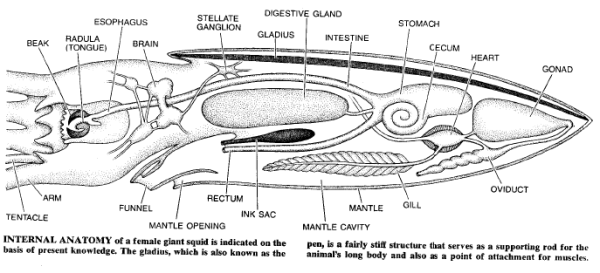
Look inside the Giant Squid and you will find mainly organs dedicated to the Giant Squid’s two favorite activities, eating and loving. The digestive system begins with formidable chitinous beak. The half-foot long beak is surrounded by a muscular mass that can both protrude and rotate the beak. The upper beak with downward point possesses a perfect cutting edge with a lower beak to tear prey apart. The esophagus moves chunks of prey onward toward the stomach. A set of massive salivary glands and a single digestive gland produce enough enzymes to digest a subway car. Yeah, that’s awesome. And to demonstrate the Giant Squid’s dedication to eating, I deliver exhibit A: the esophagus of this beast passes directly through the middle of its brain.
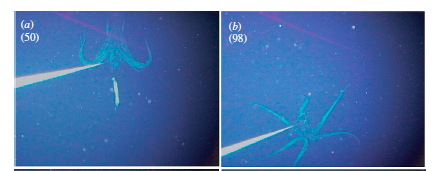 What do Giant Squid eat? Misbehaved children, subway cars, fish, and other squids. Juvenile squid appear to take smaller less feisty prey low on the food chain while adults feed larger prey at the top food chain. Gut contents have included: 10 species of fish, 1 clam, some tunicates, 3 types of crustacean, and 5 species of squid. Genetic screening of gut contents from Architeuthis yielded of evidence of both the fish blue grenadier and other Giant Squid. That’s right, cannibalism is also known among giant squid.
What do Giant Squid eat? Misbehaved children, subway cars, fish, and other squids. Juvenile squid appear to take smaller less feisty prey low on the food chain while adults feed larger prey at the top food chain. Gut contents have included: 10 species of fish, 1 clam, some tunicates, 3 types of crustacean, and 5 species of squid. Genetic screening of gut contents from Architeuthis yielded of evidence of both the fish blue grenadier and other Giant Squid. That’s right, cannibalism is also known among giant squid.




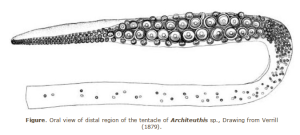


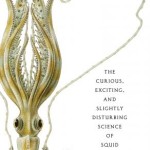



Aw man. They just HAD to start off this post with suggesting there were giant squid under the bed, didn’t they? I’ve been terrified of giant squid under my bed since I was eight years old! And I was a GOOD kid!
I am very sad that I missed most of Kraken Day and do not have an appropriate party hat. :(
If the biggest scientifically recorded specimen is 42ft, doesn’t that make it very likely that there are much bigger ones? I mean, what are the chances that the biggest one was also the one scientists got to measure? Pretty small I would imagine. So 50-60ft surely seems plausible…